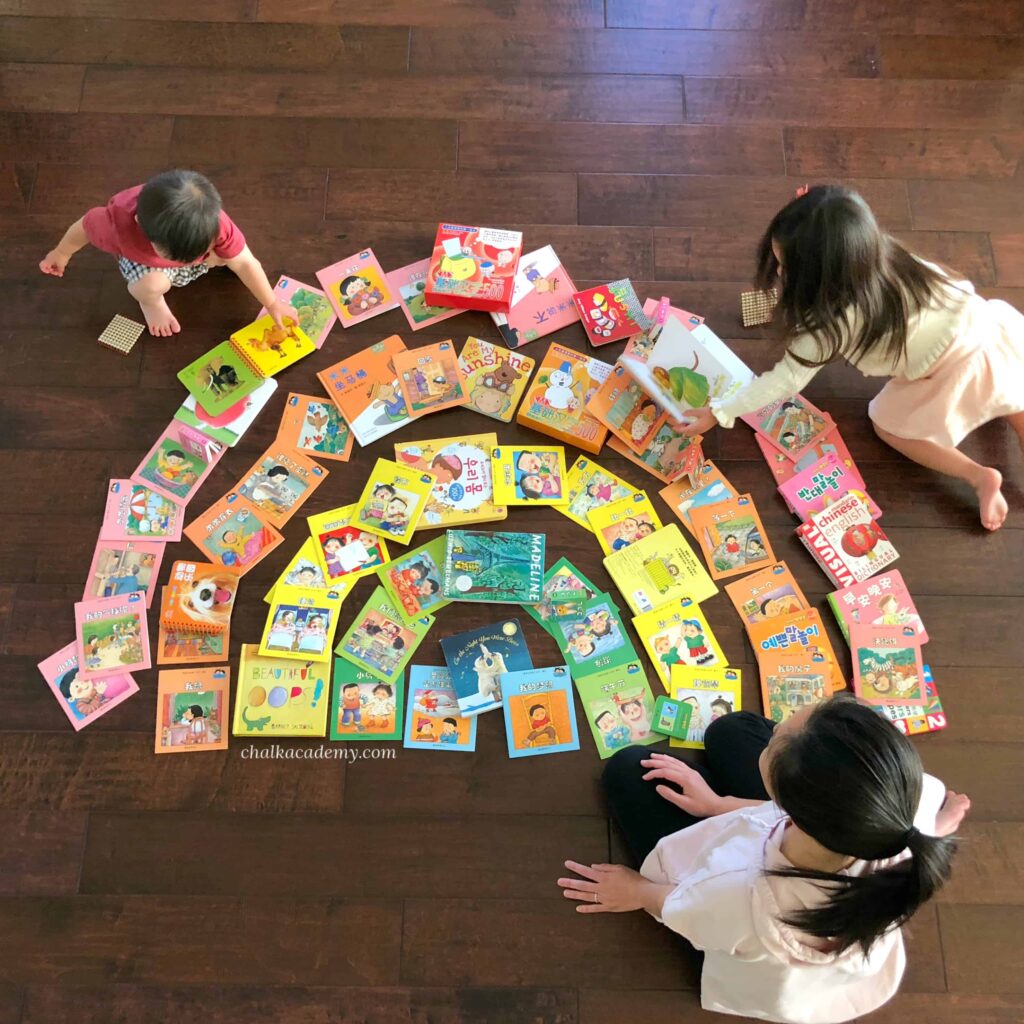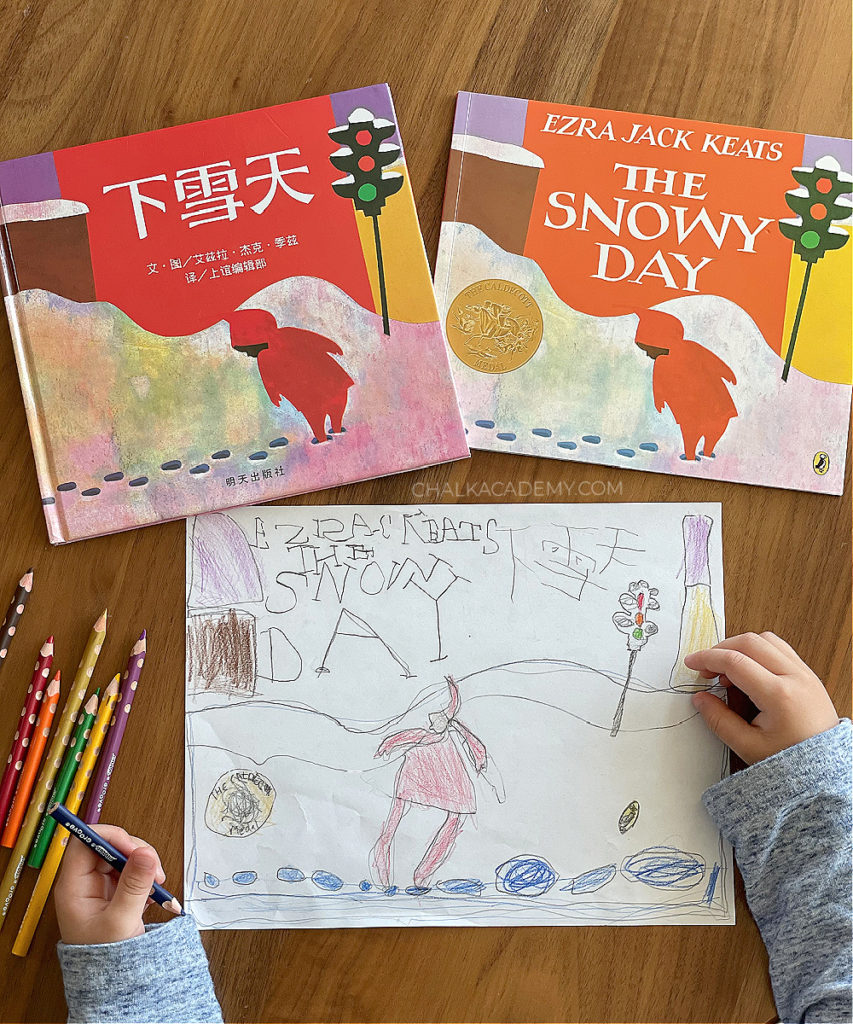Fun Ways to Test Reading Comprehension with Kids

Learning to read is a very exciting milestone, but does your child truly understand what they are reading?
Reading is more than decoding words on a page; children must see the full story. Fortunately, checking a child’s understanding doesn’t have to be a tedious task. In fact, there are many fun ways to test reading comprehension with kids. Here are five fun methods you can try with your child or student.
Since we’re raising multilingual children in English, Chinese, and Korean, I’ll share examples of fun reading comprehension activities that you can try in your target language.
Explore this: How I Taught My Child 1000 Chinese Characters as a Non-Fluent Speaker
Chalk Academy is reader-supported. Some of the links are affiliate links. When you buy something through an affiliate link, we may earn a very small commission at no cost to you. Details here.
Fun ways to test a child’s reading comprehension
Reading comprehension involves decoding, interpreting, and remembering the meaning of words in sentences and paragraphs. A child’s brain works hard to visualize stories they hear and read.
Kids can be put off by direct questioning and quizzing. Instead, these playful strategies encourage a child to reflect on what they’ve read. At the same time, they help parents and teachers evaluate a child’s reading comprehension skills.
Whether you’re a parent or a language teacher for kids, fun, simple, and creative activities can improve reading comprehension skills at home or school.
Draw what you understand from the story
Drawing is a great reading comprehension activity, especially for children who are shy or not confident about speaking a minority language or expressing themselves verbally.
After a child draws a picture, ask them to describe what they drew. Resist the temptation to guess what they drew and the meaning. In other words, let your child lead the way.
Take some time to share your observations and reflections on the story, too.
Craft key parts of a story

If you have a kid who enjoys creating, building, and working with his or her hands, a book-based activity is a great way to help kids understand what they read.
For example, here is a paper plate craft inspired by the Rainbow Fish book! To check my daughter’s reading comprehension, I asked her what she thought was important from the book. She then wrote those words on the “scales” of the Rainbow Fish craft!
Reading comprehension re-enactment
When my children and I learn new Chinese or Korean phrases, we try to act out what we just read. In addition to being fun, using our whole body helps us remember the concept better. For example, when we learned about different animals around the world, we would pretend to be the animals. My kids have had such a blast hopping on the floor like bunnies, which is 兔子(tùzǐ) in Chinese and 토끼 (tokki) in Korean.
This reenactment activity is also wonderful for building and testing reading comprehension. While reading 司马光砸缸 (Sīmǎ guāng zá gāng / Si Ma Guang Breaks the Jar) in 四五快读, we used toys and pretended they represented 司马光, friends, and the giant jar.
We’ve also had fun acting out audiobooks, such as 狼和七只小山羊 (Láng hé qī zhī xiǎo shānyáng / Wolf and Seven Little Goats). This video of my daughter reciting and performing in Mandarin Chinese is a lively example of reading comprehension.
Related: How to Learn Mandarin Chinese from Audiobooks
True or false reading comprehension game
True or false (right or wrong) is one of our favorite ways to practice reading! You can do this verbally or by writing sentences about a recent event or story that you have read. Below is an example of sentences I wrote for my daughter. To make the reading activity hands-on, we use Post-It notes for fun sticking.

Please note that I am not fluent in Chinese, so what you see in the photo might not be grammatically correct (I think 与 (Yǔ / versus) should have been 或 (huò / or) or 还是 (háishì / or), and I always appreciate feedback!).
Since I’m trying to learn Chinese with my children, I try to create activities to improve my own Chinese writing and reading comprehension skills. Kids like to read sentences about their lives. But you can also try playing true or false to check if your child understands a book your child recently read.
Guess the book reading comprehension scavenger hunt

Once, I surprised my kids by arranging their Chinese books, Korean books, and English books into a rainbow. Then, I hid something in certain books, and I gave my kids clues by telling them bits and pieces about the book’s plot, characters, and takeaway points.
This “Guess the Book” game was super fun for my kids, and they had no idea I was checking their reading comprehension! My daughter also had fun hiding and giving clues.
If you prefer not to have a book mess like the one in the above picture, set out just a handful of children’s books! 🙂 You can hide anything, such as a bookmark. See if your child has any ideas to spruce up the game and spark discussion about the books!
Try this: Fun Printable Scavenger Hunts for Kids (Chinese, Korean, English)
Play teacher
Kids love to pretend that they are the teacher, parent, or any grown-up! After reading a book of your child’s choice, he or she can take the role of the teacher and ask mom and dad questions about the book.
When children think up questions, they are using creative reading comprehension skills. Plus, kids often think it’s fun to test mom and dad! This child-led activity is a win-win for speaking, listening, and reading comprehension practice.
Tips for boosting and checking reading comprehension skills
Keep in mind that reading comprehension skills are more than just books. Decoding and interpreting are important parts of everyday non-verbal and verbal communication, too. In regular conversations with your kids, narrate how you noticed a person’s emotion and voice. Reflect on what they might be thinking.
When you’re out and about, read signs and labels aloud and share what you’ve understood from those important words.
Also, give specific praise for effort and observations. This positive reinforcement can help boost their confidence!
What are your favorite ways to test reading comprehension?
I hope these play-based reading comprehension activities help your child’s reading journey! If you have other favorite ways to check reading comprehension skills in kids, please share in the comments. We’d love to learn from your experience.



I have been asking my 2 youngest daughters to translate Spanish words for daddy, because he does not understand Spanish very well. Now we are going to translate simple stories for him this weekend(he works alot far away during the week). Next we are learning some basic words in Russian. They have to tell me what the words mean. Then they will transate simple stories for me. My Russian is not very good. This puts them in the role of teacher. They will also learn to translate between languages. That will give them future job experience. They will also be prepared to teach their kids. It is so amazing to see kids learn so much and so quickly. They have such amazing learning potential!
Thank you for sharing, Elena! Kids are amazing, and it’s so fun to learn from them! 🙂 So wonderful to hear that your children are teaching you and your husband new words!